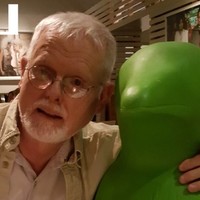
Phoebe Crisman
Phoebe Crisman, AIA is a Professor of Architecture at the University of Virginia, where she teaches design studios and lectures on sustainability, architecture theory, and urbanism. Crisman is Director of the pan-university Global Studies program and the interdisciplinary Major and Minor in Global Environments + Sustainability.
In her teaching, research and practice, Crisman focuses on the design of sustainable relationships between specific cultures and built environments. Working in overlooked places and with people underserved by design, she has developed a model of engaged design research to test abstract ideas and create more sustainable communities. Agency through architecture and the critical engagement of complex social and ethical considerations are crucial to this work. Employing ecological and cultural sustainability strategies across multiple scales, she investigates complex relationships between human inhabitation, environmental restoration, and sustainability education.
Her publications include peer-reviewed chapters in Generosity and Architecture (Routledge 2022), Re-City: (im)Possible Cities (Tampere University of Technology 2018), Transgression: Towards an Expanded Field of Architecture (Routledge 2014), Peripheries (Routledge 2012), Agency: Working with Uncertain Architectures (Routledge 2010), The Hand and the Soul: Essays on Ethics and Aesthetics (UVA Press 2009), and Architecture is a Thing of Art (Savannah College of Art Publications 2009). Her essays are published in the Journal of Architecture, Arhitectura, Dialectics, Dialogues, Room One Thousand, Places, and the Journal of Architectural Education. Crisman also co-edited Design for Climate Action (ACSA 2020), Global Sustainability (Cognella 2013), and The Value of Design (ACSA 2009). A licensed Architect and member of the American Institute of Arcthitects, she practiced in Hong Kong, Chicago, and Boston prior to establishing Crisman+Petrus Architects in Charlottesville, VA. Crisman is a graduate of the Harvard Graduate School of Design and the Carnegie Mellon College of Fine Arts.
Phone: 434-924-1006
Address: University of Virginia
School of Architecture
Campbell Hall PO Box 400122
Charlottesville, VA 22904 USA
In her teaching, research and practice, Crisman focuses on the design of sustainable relationships between specific cultures and built environments. Working in overlooked places and with people underserved by design, she has developed a model of engaged design research to test abstract ideas and create more sustainable communities. Agency through architecture and the critical engagement of complex social and ethical considerations are crucial to this work. Employing ecological and cultural sustainability strategies across multiple scales, she investigates complex relationships between human inhabitation, environmental restoration, and sustainability education.
Her publications include peer-reviewed chapters in Generosity and Architecture (Routledge 2022), Re-City: (im)Possible Cities (Tampere University of Technology 2018), Transgression: Towards an Expanded Field of Architecture (Routledge 2014), Peripheries (Routledge 2012), Agency: Working with Uncertain Architectures (Routledge 2010), The Hand and the Soul: Essays on Ethics and Aesthetics (UVA Press 2009), and Architecture is a Thing of Art (Savannah College of Art Publications 2009). Her essays are published in the Journal of Architecture, Arhitectura, Dialectics, Dialogues, Room One Thousand, Places, and the Journal of Architectural Education. Crisman also co-edited Design for Climate Action (ACSA 2020), Global Sustainability (Cognella 2013), and The Value of Design (ACSA 2009). A licensed Architect and member of the American Institute of Arcthitects, she practiced in Hong Kong, Chicago, and Boston prior to establishing Crisman+Petrus Architects in Charlottesville, VA. Crisman is a graduate of the Harvard Graduate School of Design and the Carnegie Mellon College of Fine Arts.
Phone: 434-924-1006
Address: University of Virginia
School of Architecture
Campbell Hall PO Box 400122
Charlottesville, VA 22904 USA
less
Related Authors
Muqtedar Khan
University of Delaware
Ehab Kamel
University of York
Nina-Marie Lister
Toronto Metropolitan University
John Barry
Queen's University Belfast
Bent Flyvbjerg
University of Oxford
David Seamon
Kansas State University
Simon Springer
The University of Newcastle
Ittai Weinryb
Bard College
Kyle Whyte
University of Michigan
Joshua Hanan
University of Denver
InterestsView All (14)










Uploads
Books by Phoebe Crisman
Book Chapters: Peer Reviewed by Phoebe Crisman
This is especially important since urban adaptation solutions often include massive concrete walls or earthen levees that disconnect residents from the water and damage coastal habitat. By simultaneously considering the intertwined value of urban parks, wetland restoration, and SLR mitigation, coastal cities can achieve synergistic solutions to all three challenges. Hence, urban wetland parks are a particularly viable strategy.
This paper includes a focused case study of the Paradise Creek Nature Park in Norfolk, Virginia—one of the cities most threatened by sea level rise in the United States. This recently completed, 40-acre constructed wetland park is located amidst contaminated industrial sites and an economically challenged and racially diverse urban neighborhood. The Park project empowered an urban community in need, while designing, implementing, and testing translatable strategies for creating healthy, public landscapes. The necessity of integrating resilient coastal design strategies and public health and advocacy policies is escalating as sea levels rise.
For example, students in architecture, landscape, art, history, engineering, and education collaborated to create a nomadic, off-the-grid environmental classroom that will traverse a significant and contaminated urban river. The Learning Barge will interactively engage 19,000 people yearly through school trips and public workshops relating human actions with the tidal estuary ecosystem, climate change, pollution prevention and ecological restoration. The field station will teach through example by harnessing sun and wind energy, collecting rainwater, filtering greywater in an onboard native plant wetland, and utilizing green technologies. Urgent social and environmental considerations required analytical and design methods that ranged from complex urban environments to architectural details, while opening a discussion about the enabling power of architecture.
Based on theories of critical pedagogy and research service learning, there are several intertwined educational objectives: helping students to connect their architectural humanities research, architectural praxis and daily lives as accountable citizens; working to make a positive difference in the world through design by linking students with economically and socially disenfranchised communities; fostering an awareness of and commitment to environmental ethics and sustainable strategies at the urban and architectural scales; and linking such an awareness to formal and aesthetic research. It is essential that architecture studios ready students to critically engage ethical considerations and to formulate their own clearly articulated theory for responsible social and environmental action through design.
Journal Articles: Peer Reviewed by Phoebe Crisman
Papers: Peer Reviewed by Phoebe Crisman
This paper develops a case study based on two years of participant-observation research analyzing a new interdisciplinary major in Global Studies at the University of Virginia. A complex partnership between the College of Arts & Sciences and the Schools of Architecture, Commerce, Education, Engineering, Leadership and Public Policy, and Nursing, the program structures research and courses around broad skills and methods of understanding global phenomena. Outcomes include both substantive knowledge and enduring life-enhancing skills. While Public Health, Development Studies, and Security and Justice were originally planned concentrations for the major, serious consideration of the built environment was absent. As a Professor of Architecture, I worked to integrate environmental issues within the proposed major through a Global Environments and Sustainability concentration. The architectural discipline’s knowledge and research methods, such as design thinking, participatory and practice-led research and experiential learning methods, can effectively contribute to a focus on creating innovative solutions to real-world environmental, social, and economic challenges. The Global Environments + Sustainability approach establishes a translatable model to bring research in sustainable architecture and environmental design to the forefront of Global Studies.
Though the importance of the senses in making may seem indisputable, current architectural design processes have become increasingly focused on visuality as the physical world is dematerialized by electronic media and appearance is often valued over existence. This situation in architecture is not unique, however, for we all live in an increasingly visual and image-conscious culture. Because architecture and art is disseminated and legitimated in 2D media, more architects and artists are concerned with creating work that will appear well in magazines than aim to support human occupation or engender sensory engagement. Nevertheless, the essential power of touch, sound, and smell clearly persists. Phenomenology, in its desire to restore the sensory plenitude of lived experience, has been revelatory for the disciplines of art and architecture. Rooted in the ideas of Husserl, Heidegger and Bachelard, for example, Juhani Pallasmaa’s writing laments the loss of sensuality in culture and architecture. In The Eyes of the Skin: Architecture and the Senses, he describes the contemporary dominance of vision or ocularcentrism and argues that the senses are not independent, but interactive and synergetic. From a related position, Zumthor articulates nine things in his creative process that produce a unified sensory approach. He considers how human bodies find pleasure and protection in specific thermal conditions. As Zumthor’s work eloquently exemplifies, the senses together spur enlightened reflection and amplify human experience of architecture and art.
This is especially important since urban adaptation solutions often include massive concrete walls or earthen levees that disconnect residents from the water and damage coastal habitat. By simultaneously considering the intertwined value of urban parks, wetland restoration, and SLR mitigation, coastal cities can achieve synergistic solutions to all three challenges. Hence, urban wetland parks are a particularly viable strategy.
This paper includes a focused case study of the Paradise Creek Nature Park in Norfolk, Virginia—one of the cities most threatened by sea level rise in the United States. This recently completed, 40-acre constructed wetland park is located amidst contaminated industrial sites and an economically challenged and racially diverse urban neighborhood. The Park project empowered an urban community in need, while designing, implementing, and testing translatable strategies for creating healthy, public landscapes. The necessity of integrating resilient coastal design strategies and public health and advocacy policies is escalating as sea levels rise.
For example, students in architecture, landscape, art, history, engineering, and education collaborated to create a nomadic, off-the-grid environmental classroom that will traverse a significant and contaminated urban river. The Learning Barge will interactively engage 19,000 people yearly through school trips and public workshops relating human actions with the tidal estuary ecosystem, climate change, pollution prevention and ecological restoration. The field station will teach through example by harnessing sun and wind energy, collecting rainwater, filtering greywater in an onboard native plant wetland, and utilizing green technologies. Urgent social and environmental considerations required analytical and design methods that ranged from complex urban environments to architectural details, while opening a discussion about the enabling power of architecture.
Based on theories of critical pedagogy and research service learning, there are several intertwined educational objectives: helping students to connect their architectural humanities research, architectural praxis and daily lives as accountable citizens; working to make a positive difference in the world through design by linking students with economically and socially disenfranchised communities; fostering an awareness of and commitment to environmental ethics and sustainable strategies at the urban and architectural scales; and linking such an awareness to formal and aesthetic research. It is essential that architecture studios ready students to critically engage ethical considerations and to formulate their own clearly articulated theory for responsible social and environmental action through design.
This paper develops a case study based on two years of participant-observation research analyzing a new interdisciplinary major in Global Studies at the University of Virginia. A complex partnership between the College of Arts & Sciences and the Schools of Architecture, Commerce, Education, Engineering, Leadership and Public Policy, and Nursing, the program structures research and courses around broad skills and methods of understanding global phenomena. Outcomes include both substantive knowledge and enduring life-enhancing skills. While Public Health, Development Studies, and Security and Justice were originally planned concentrations for the major, serious consideration of the built environment was absent. As a Professor of Architecture, I worked to integrate environmental issues within the proposed major through a Global Environments and Sustainability concentration. The architectural discipline’s knowledge and research methods, such as design thinking, participatory and practice-led research and experiential learning methods, can effectively contribute to a focus on creating innovative solutions to real-world environmental, social, and economic challenges. The Global Environments + Sustainability approach establishes a translatable model to bring research in sustainable architecture and environmental design to the forefront of Global Studies.
Though the importance of the senses in making may seem indisputable, current architectural design processes have become increasingly focused on visuality as the physical world is dematerialized by electronic media and appearance is often valued over existence. This situation in architecture is not unique, however, for we all live in an increasingly visual and image-conscious culture. Because architecture and art is disseminated and legitimated in 2D media, more architects and artists are concerned with creating work that will appear well in magazines than aim to support human occupation or engender sensory engagement. Nevertheless, the essential power of touch, sound, and smell clearly persists. Phenomenology, in its desire to restore the sensory plenitude of lived experience, has been revelatory for the disciplines of art and architecture. Rooted in the ideas of Husserl, Heidegger and Bachelard, for example, Juhani Pallasmaa’s writing laments the loss of sensuality in culture and architecture. In The Eyes of the Skin: Architecture and the Senses, he describes the contemporary dominance of vision or ocularcentrism and argues that the senses are not independent, but interactive and synergetic. From a related position, Zumthor articulates nine things in his creative process that produce a unified sensory approach. He considers how human bodies find pleasure and protection in specific thermal conditions. As Zumthor’s work eloquently exemplifies, the senses together spur enlightened reflection and amplify human experience of architecture and art.
University of Virginia Speakers:
Karen McGlathery, Professor of Environmental Sciences and Associate Vice President for Research, Sustainability & the Environment
Phoebe Crisman, Associate Professor of Architecture
Jonathan Goodall, Associate Professor of Civil and Environmental Engineering